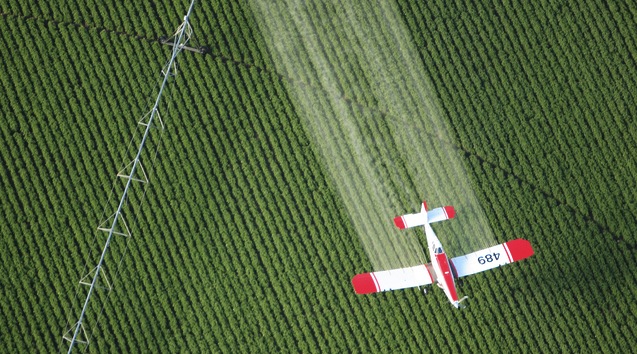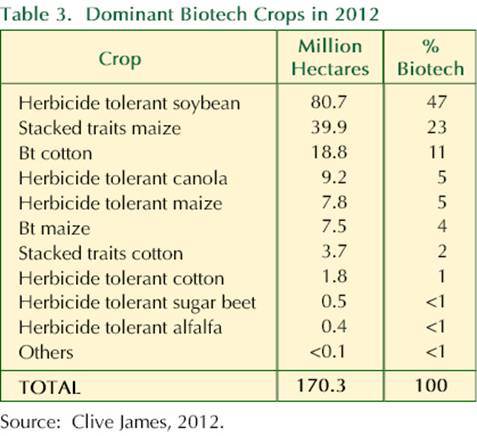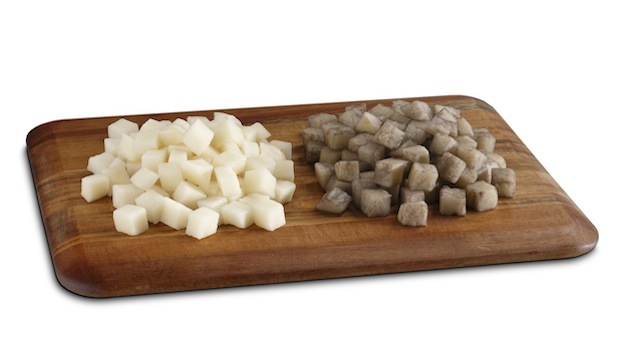
<a href="http://www.shutterstock.com/downloading_tips.mhtml?code=&id=204934945&size=medium&image_format=jpg&method=download&super_url=http%3A%2F%2Fdownload.shutterstock.com%2Fgatekeeper%2FW3siZSI6MTQyNzM0NTM3MiwiYyI6Il9waG90b19zZXNzaW9uX2lkIiwiZGMiOiJpZGxfMjA0OTM0OTQ1IiwicCI6InYxfDcwMDY5MzZ8MjA0OTM0OTQ1IiwiayI6InBob3RvLzIwNDkzNDk0NS9tZWRpdW0uanBnIiwibSI6IjEiLCJkIjoic2h1dHRlcnN0b2NrLW1lZGlhIn0sIko0T3lUalVISWVzaHJTeUNWMVJLbGN0Q1RNUSJd%2Fshutterstock_204934945.jpg&racksite_id=ny&chosen_subscription=1&license=standard&src=D1XrPYwefWHS55tA2erpeg-1-6">Photographer</a>/Shutterstock
In a recent column, the New York Times‘ Mark Bittman makes an important point about the controversy around genetically modified foods. “[T]o date there’s little credible evidence that any food grown with genetic engineering techniques is dangerous to human health,” he writes. Yet the way the technology has been used—mainly, to engineer crops that can withstand herbicides—is deeply problematic, he argues.
Here’s why I think Bittman’s point is crucial. The below chart, from the pro-biotech International Service for the Acquisition of Agri-biotech Applications, gives a snapshot of what types of GMO crops farmers were planting as of 2012. In more recent reports, the ISAAA doesn’t break out its data in the same way, but it’s a fair assumption that things are roughly similar three years later, given that no GMO blockbusters have entered the market since.

If you add up all the herbicide-tolerant crops on the list, you find that about 69 percent of global GM acres are planted with crops engineered to withstand herbicides. But that’s an undercount, because the GM products listed as “stacked traits” are engineered to repel insects (the Bt trait) and to withstand herbicides. Adding those acres in, the grand total comes to something like 84 percent of global biotech acres devoted to crops that can flourish when doused with weed killers—chemicals that are sold by the very same companies that sell the GMO seeds.
As Bittman points out, almost all of the herbicide-tolerant crops on the market to date have been engineered to resist a single herbicide, glyphosate. And weeds have evolved to resist that herbicide, forcing farmers to apply heavier doses and or added older, more toxic chemicals to the mix.
Rather than reconsider the wisdom of committing tens of millions of acres to crops developed to resist a single herbicide, the industry plans to double down: Monsanto and rival Dow will both be marketing crops next year engineered to withstand both glyphosate and more-toxic herbicides—even though scientists like Penn State University’s David Mortensen are convinced that the new products are “likely to increase the severity of resistant weeds” and “facilitate a significant increase in herbicide use.”
Meanwhile, unhappily, the World Health Organization has recently decreed glyphosate, sold by Monsanto under the Roundup brand name, a “probable carcinogen”—a designation Monsanto is vigorously trying to get rescinded.
So, given that 20 years after GM crops first appeared on farm fields, something like four-fifths of global biotech acres are still devoted to herbicide-tolerant crops, Bittman’s unease about how the technology has been deployed seems warranted. It’s true that genetically altered apples and potatoes that don’t brown as rapidly when they’re sliced will soon hit the market. They may prove to be a benign development. But it’s doubtful that they’ll spread over enough acres to rival herbicide-tolerant crops anytime soon. And humanity has thrived for millennia despite the scourge of fast-browning apples and potatoes. The same isn’t true for ever-increasing deluges of toxic herbicides.
















